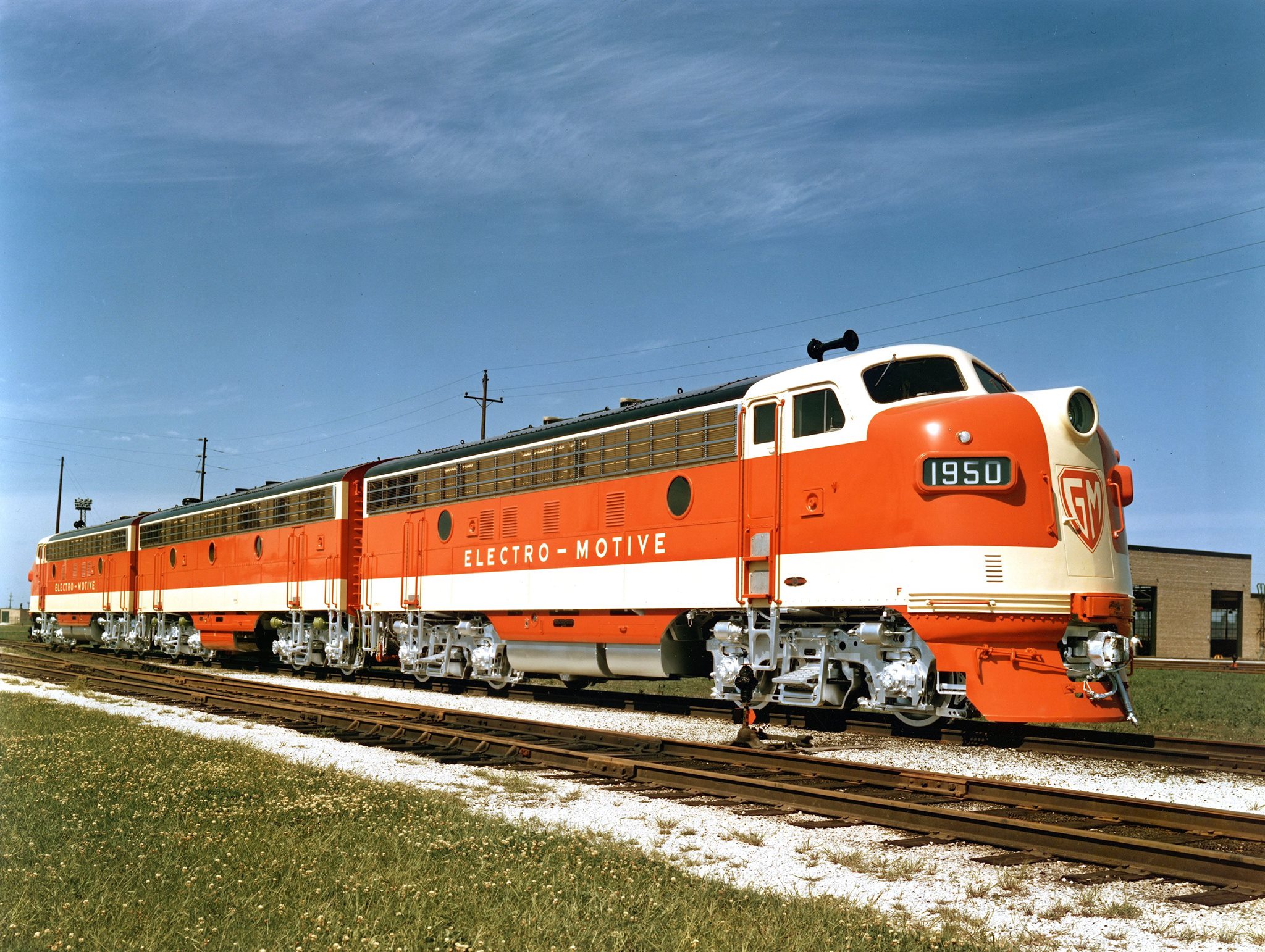Hmm, these huge trucks are killing pedestrians, causing worse crashes due to crash incompatibility, destroying the climate, and now smashing through guard rails and flying off cliffs. We’d better change our entire country’s infrastructure to accommodate them.
It’s the good Christian thing to do
Amen
Isn’t this just the road trying to solve the problem for us? I say we should have more ditches and guardrail barriers!
Lol you apparently didn’t read the article… it’s calling out EVs because they’re usually heavier than the ICE counterparts. Small sedans are pushing 5k pounds now being EVs. Batteries are very very heavy.
It’s worth highlighting that this study isn’t really about the merits of EVs. After all, you can buy an EV that weighs less than 5,000 pounds. You just can’t electrify your favorite already-large car—or even buy a hulking gas-powered car—and expect guardrails to work as intended. “Weight is a universal problem; it is not unique to electric vehicles,” Stolle said. “We have similar concerns about the compatibility of the biggest gas-powered cars with our guardrail system.” The 6,700-pound Chevrolet Silverado 1500 already weighs too much, based on the result from this research, and the 8,500-pound Silverado EV weighs even more.
Yes but you called out trucks like they’re the only issue. An electric leaf is almost 5k pounds…a leaf…
A leaf is 3500-3900 lbs, not almost 5k lbs
Curb weight on them is 4,900, yes it’s not 5k that’s why I said nearly 5k…and the point I am making is that a tiny car like that weighing that much shows that batteries are not light.
You added an extra 1000 lbs to the heaviest version, then rounded up. The whole entire point of standard weights is so numbskulls don’t just make up numbers for how much things weigh, like you are. The leaf is 350-3900 lbs, not 4900 lbs, not 5000 lbs. Please go back to elementary school.
https://www.autoblog.com/buy/2022-Nissan-LEAF-S__4dr_Hatchback/specs/
Should have clarified that I meant gross weight.
Tax the heavy cars much more, they cause more dammage in crashes and way more wear and tear in general.
Fuck that. The problem isnt that people want bigger cars. The problem is that NHTSA’s CAFE standards favor manufacture of larger cars.
CAFE slowly reduces the amount of emissions that vehicles can have, but they fucked it up: the required reductions are greatest on the smallest, most efficient cars, and lowest on the largest vehicles. Manufacturers “comply” with these standards by dropping their smallest cars from their lineup, and increasing the sizes of everything left on the market.
Fix the fucking standards to favor smaller cars, and manufacturers will follow.
It would be great if the standards could be loosened a bit to allow more sedans to exist. A modern crown vic would be awesome, but it’s impossible to make with the current rules.
At least here in Cali we do. My HD truck gets an extra $500~ a year tax on top of the Gas guzzler tax I paid when new. Plus the fuel costs/taxes for that. Compared to my other cars I pay about $600 more for newal on it. The Average car is like $245 a year but the truck is like $840.
Definitely fine with paying the extra taxes though. I use more infrastructure and I also require additional strengthening of crash systems and cause road damage so I’m not opposed.
If only everyone was as reasonable as you!
Meanwhile in Wisconsin I have to pay an extra $100/yr for registration because I drive a hybrid.
Why?
Because, I shit you not, driving a hybrid apparently costs the state too much money, because we have to fuel up less, and so they get less tax.
What the fuck.
Rather than tax them a bit more, which won’t actually improve safety if people just opt to pay the tax and drive them anyway, why not just straight up legislate weight limits for private vehicles, with commercial licensing as done with cargo trucks expanded to fit more conventional vehicles driven for commercial purposes that have to be large and heavy? Car companies will start making smaller cars again real quick if they’re not allowed to sell them otherwise
The point is to use the tax to pay for upgrading the infrastucture. Also attempting to regulate car sizes like that would be political suicide in most states.
Why not make it a two peonged attack against heavy vehicles?
Tax heavy cars severely, and bring the smaller cars we have in Europe to the US, getting the VW Transporter and MB Sprinter would offer smaller, lighter and cheaper utility vehicles with more useful features to the US.
Or just ban them from certain roads.
The current version of MGS was developed to withstand cars weighing a maximum of 5,000 pounds, but many of today’s SUVs and trucks exceed that threshold.
MGS being what I’ve known as W beam guardrail.
Fun fact: In Spanish it’s called ‘quitamiedos’, which literally means ‘fear remover’. It’s not supposed to stop you, just let you drive closer to the edge :)
I know America has an obesity epidemic, but did it really have to be extended to our cars?
fuel eff requirements tied to weight
just another oil company + car company scam
The car companies (like basically all other corporations) successfully passed their externalities onto the Government and the Government has done nothing to try to recoup those costs.
But he noted that in the real world, a guardrail is much more likely to be placed next to a steep [drop-off] than a concrete barrier.
Thankfully it was a test, but there’s probably already instances where an over-weight vehicle has smashed through safety devices.
There’s a guard rail guy on YouTube who investigates how the guard rails have been fitted. They often have bolts and the tension wire incorrectly installed so much so that they don’t even effectively stop small vehicles. That guy lost a family member to this type of accident and so is on a crusade kinda.
My kinda superhero
https://m.youtube.com/@TheGuardrailGuy
It’s sad because you can hear the frustration in his voice that for the sake of better training lives could be saved.
I am contracted to a utility and I get to see just how much time they spend on teaching people about safety. We still see deaths and serious injuries because some people are so lazy they don’t give a fuck if they kill someone.
I’m willing to bet the super tall pickups and SUVs are more likely to hop over those steel guardrails, too. Related: Those sloped concrete dividers that have a slightly shallower slope at their wider bottom? Those are super effective, because that bottom slope deflects the vehicle’s front wheel, causing it to turn slightly away from the barrier instead of continuing to smash through it.
It’s called a Jersey barrier.
They have other issues though. They cost more to produce, cost more to install and cost more to maintain. They also accumulate snow, which would otherwise blow through an open W guard rail.
A third option are wire guards. They’re cheaper on all accounts, don’t get tagged with graffiti and statistically save more lifes. They work best on long straight stretches, but because of the flexibility, they are not ideal for inner city streets where it’s best to avoid any lane breaches at all.
Wire guards are wildly unsafe for motorcyclists though.
Everything is wildly unsafe for motorcycles though.
That’s a myth. It may look like a “cheese grater” but statistics show that they have saved more motorcycle lifes than any other barriers, and there are no records of anyone actually getting grated.
I hate to be the “sources” guy, but the last time I looked at what few studies there where on the topic they weren’t positive. Could you direct me to where you found that info?
Those are called jersey barriers
They should regulate the weight of cars. There’s no reason passenger vehicles should be as heavy as they are. For EVs they honestly shouldn’t have as much range as they do. 150 miles and improved charging infrastructure, make charging easier for folks who park on the street, is a better way to go. Folks who need to drive more than that a day should have a hybrid or ICE vehicle. Ideally a small fuel efficient one. Folks who need pickups for work should be able to buy the small European versions or work vans.
150miles is no where close to enough range for people who travel regularly. In a 3 hour trip I can do 150 miles. Depending on weather, battery degrading, and elevation that trip now requires charging multiple times which just isn’t acceptable. Let alone if you were trying to do a real road trip where you drive 1000+ miles, the amount of charge time is insane. And I want an EV for those road trips, extremely convenient for car camping.
250mi is a good number. Enough to do a lot of errands and medium trips in a day and charge overnight.
Bolt EV/EUV has that and it’s a compact.
Better to charge higher registration fees by weight.
The whole highway infrastructure tax structure will need revision as electric vehicles not paying gas taxes become more popular. Or we could just built more public transportation.
Folks who need a pickup truck for work should be required to file a permit request for pirchase of said truck.
Written by someone who owns a truck
I regularly haul 800 lbs of wood heating pellets in the back of my Subaru Baja. That’ll get me through somewhere between a week and half to almost three weeks of heating, depending on how cold the weather is. Wash, rinse, repeat all winter long.
Then there’s DYI work I’m doing on the house. I usually use my girlfriend’s Tacoma for that. Plywood, lumber, gravel, and cement mix. All of it needs to be hauled, and delivery is prohibitively expensive.
None of that is required for my desk job work.
I could give up hauling the 19’ sailboat, if need be, since that’s a luxury. It’ll make me an angry man come summer, though.
What’s your plan on addressing my needs, or are you happy to let me hang?
Are you intentionally defending lifted trucks that never hop a curb, or is that just an accidental consequence of your flex?
Neither. Not flexing, either. Hell, if I was, I wouldn’t be driving around a Baja. That model is the red-headed bastard child of the automotive world, catching grief from everyone.
Nah… just simple statements: I need to be able to get shit done outside of work, as reliably and inexpensively as I can. Find a way to sort out those folk who glam up their mall crawlers for whatever prestige is running through their empty heads and inflated egos, without hindering my ability to do what I need to do, and you’ll have the support of me and folk like me.
This.
Basically, if you need a half or full ton truck for work? Cool, ask for the permit. Oh, is it just to drive to your office desk job? Get a smaller vehicle or ride the bus
How is that permit process going to allow me a permit to get the stuff done that I need to do, while weeding out all the folk driving around pavement princesses?
Yeah, I love my truck but i don’t need it and it is selfish for me to keep using it imo.
I am hoping to get away with not having a car when it eventually dies but I’ll be buying an EV or a Hybrid sedan if I really need a car then.Trucks haven’t always been the fucking obnoxious beasts that they are now.
I’d love a truck… The size of a '93 ford ranger. I don’t need or want a goddamn castle on wheels. I want a low vehicle, doesn’t need two full rows of luxurious seats, with a box, with a footprint SMALLER than a fucking Nissan Altima. Yes, that is the '93 ford ranger.
The crime was artificially creating the false dichotomy.
93 97 Ranger Splash with the side steps in yellow was my childhood dream to own. I have no problems with 1/4 ton trucks specially that size, but there is honestly no need for a 1/2 ton or larger truck, specially as big as they have them now.
Edit: there was no yellow ranger in '93
I don’t know if I have an explicit issue with larger trucks for merely existing, and I don’t mean to be the judge and jury for who does and doesn’t need what amount of towing power for whatever they might need them for.
They’re just obscene as a daily driver, though. Two luxurious rows of seats, massive box, giant towing capacity. Pick TWO.
If consumers had a viable option where they could get any 2 without needing all 3, I think they’d take it. Lack of diversity where automakers try and find manufacturing efficiency by limiting offerings such that trucks are everything for everyone is why they’re designed for excess.
250mi is around the right target. This pops out when you do some math on reasonable travel distances, battery charge times, and padding for cold weather.
You don’t want to use the first 20% or the last 20% of the battery, so you get down to 60% right there. This improves battery lifetime and also charges faster.
Lop off another 20% for cold weather.
That brings us to 120mi between stops, which is about 2 hours of highway driving between charges. You should be able to charge that in about 20 minutes, which is about right for using the bathroom, stretching your legs, and getting something to eat. If you want to go three hours, then 375mi is the right maximum.
None of this requires changes in battery tech or charging speed.
In short, there’s not much need for cars over 400mi range. Use any further advancement in battery tech for chopping off weight, not making them go further.
It is my understanding that you don’t fully charge your EV battery typically either. You charge it to 80% of it’s capacity and that is your “100% charged” state, for battery longevity. So you are down to %40 of your theoretical range before cold weather and the batteries wearing out over time anyhow.
Right, that’s accounted for above.
Gotcha, I misunderstood that part I guess!
I can think of no better way to kill EV adoption than to intentionally make their usage less appealing than the alternative.
Guardrails, much like the crumple zones of cars, are designed to give way to dissipate energy. This is a safety feature which saves lives. There isn’t going to be a one-size-fits-all-traffic guardrail. It’s about statistically improving outcomes, but unfortunately they aren’t going to help in all cases. Maybe they need to be updated, but it’s going to take time to adjust to changing average vehicle weights.
new vehicle weight tax to fund the new guardrails
It’s not like heavy work trucks didn’t exist back then, was it just that there weren’t enough of them to care?
NGL - my last car was pretty big, but Google assures me it was only 4,100 lbs. My current car is the same size and is just under 5,000 pounds.
Yeah, it’s about reducing fatalities by engineering to the average, not engineering to the worst case.
EVs are extremely heavy too.
Yes, but they wouldn’t have to be, if not for people wanting a giant SUV with 400 miles of range. The weight goes up nonlinearly, because people aren’t willing to compromise on lifestyle for the benefit of those around them. And then they expect us not just to tolerate their lifestyle, but actually subsidize it.
Without them necessarily being SUVs, in North America, distances between cities or municipalities are pretty big. Such a trip would be 2 hours in Europe, but in North America it can easily go up to 5 hours or more.
Either we find a way to charge a car in 2 minutes, or find an alternative, otherwise we need big batteries and they will inevitably increase the weight of the car.
I regularly drive 6 hours to see family. I wish there were reliable chargers partway. I don’t think they’d have to be 2 minutes. 40-50 minutes and near restaurants would be fine for me. Most importantly, they have to have similar uptime to a gas station. Eg, the current out-of-order rate for Chargepoint, Blink and other non-Tesla charging networks is far too low in my experience to rely on for long distance drives. Too high a risk of being stranded.
I’m in Texas and will have to pay a $300 registration tax on my ev for it being “heavy and destructive and not paying fuel tax”. My ev is a 2018 Fiat 500e and weighs 2900lbs. I’m tired of this argument especially when plenty of trucks weigh anywhere from 4500lbs (for the smallest examples) to quite literally 80k. Raise the fuel tax and you’ll solve heavy vehicles virtually overnight.
Before anyone gets on my case I’m fully aware that not all evs are as light as mine, but plenty are lighter than an f150.
It’s an interesting problem. We want people to ideally just drive less, and use EVs when they do, but EVs are heavier for the same vehicle and don’t buy fuel that’s usually taxed to help cover vehicle infrastructure costs. So they can cause extra wear and don’t pay for it. I’m not sure how to solve that future problem other than tolls maybe?
Same way we can fund everything else: tax the rich, cut mitary spending.
That doesn’t solve the issue though… We want to tie driving more to paying more.
Right now, fuel taxes work decently well as heavier vehicles tend to burn more and the more you drive the more fuel you need too. EVs don’t operate the same way, and we don’t want electricity in general more expensive to cover roads as that doesn’t encourage people to drive less.
“We want to tie driving more to paying more.”
Why? Because it’s fair? I don’t really give a shit if it’s fair, we need functioning infrastructure and incentivizing people to pay less into that system is counterproductive.
Being expensive demonstrably does not reduce driving in any significant way. The near-total lack of functional alternatives needs to be addressed.
Yes, as mentioned in the article they can be 30% heavier for the same vehicle
Electric cars often weigh around 30 percent more than a gas-powered counterpart, because big vehicles require enormous batteries to propel them hundreds of miles between charges.
They won’t stay that way forever. Our battery tech is far from hitting theoretical limits of kwh per kg.
None of which will matter if all you can buy is big SUVs.
Sounds like a you problem -Car Ceo’s
In a better world roads would be closed for cars which exceed the capacity of those guard rails. Just put up a sign, do some enforcement and people will start buying smaller cars when they can’t use them.
Vehicles that weigh more than 4 tons make up a significant amount of road traffic right now.
Literally everything you purchase in a store, your food, your toiletries, your clothes, any consumer good you have every purchased traveled on a road at some point in a vehicle that far exceeds 8 tons. Ambulances weigh more than 8 tons, fire trucks weigh more than 8 tons, mail is transported in vehicles that weigh more than 8 tons.
7,000lbs is an extremely low failure point for a guard rail given the number of vehicles that exceed that weight on the road today.Require a CDL for the big vehicles. Maintain stringent requirements for the CDL.
Do you still want that electric Ram?
Commercial driver’s license? I AM TRAVELLING AND NOT ENGAGED IN COMMERCE
Oh, that brings back some memories of Reddit
I DEMAND TO BE ABLE TO DRIVE MY 18 WHEELER WHEREVER I PLEASE, HEIGHT CLEARANCES ARE A DEEP STATE PLOT TO TAKE AWAY MY FREEDUMB
11’8" bridge cares not for your “freedoms”
A good chunk of what’s mentioned in GP already requires a CDL. That’s not the issue.
I keep seeing “CDL” brought up as a magic solution, and it’s clear people haven’t looked into how it works and what it affects.
It failing against a semi or a firetruck is kind of understandable but…yeah. Ambulances and then the ‘smaller’ every day vehicles? this shit is unacceptable
In an even better world, policies wouldn’t be manipulative shitstains aimed at consumers and instead be regulation on those actually creating the thing that needs to change…
What would we do about semi trucks, delivery vans, busses, dump trucks, etc. etc. etc. Personally I’ve seen some pretty short busses but never a sport compact model.
Pretty much all of those vehicles require a CDL.
Seems like vehicles over a certain weight requiring a special license classification is a pretty straightforward and reasonable requirement.
But we can’t do it without simultaneously addressing mass transit, bikeped, and our general absolute psychological fixation around designing all of our society around cars first and people second.
Actually, you only need a CDL if you’re driving it commercially. I could walk out and buy a semi right now and drive it home. This is why you can rent Uhaul trucks and buy bus-sized RVs without a special license.
It varies somewhat by state, but that’s generally incorrect.
Because the type of vehicle, and not the driver, defines who needs a CDL, the following characteristics have been set forth to define what a commercial motor vehicle is. A CDL is required of any driver of:
- Any vehicle designed to carry 16 or more persons including the driver, such as our campuses’ mini buses.
- Any vehicle that weighs over 26,000 pounds (defined as the greater of manufacturer’s gross vehicle weight rating, manufacturer’s gross combination weight rating, actual weight, or registered weight).
- Any vehicle that carries hazardous materials that require placarding as found in Title 49, Code of Federal Regulations, Part 397.
These requirements include volunteers and temporary renters of such vehicles who are driving commercial motor vehicles on University business.
Uhaul intentionally goes right below the cutoff. Their largest truck is 26’:
https://www.uhaul.com/Truck-Rentals/26ft-Moving-Truck/
Which has a GVWR of 25,999lbs. Very precise of them and totally real.
I did not know that, but it unfortunately makes sense. You should always be absolutely terrified for your life when you see a uhaul for a reason.
God, it truly is “for non-commercial use only”. I hear a chorus of sovcits cheering.
There are already road signs that limit vehicle weight or restrictions for these vehicles anyway.
deleted by creator
The current version of MGS was developed to withstand cars weighing a maximum of 5,000 pounds
Seems like yet another case of a flawed study or a flawed article based on a misunderstanding of the study.
Statements like the quote above make no sense as “withstanding a 5,000lb vehicle” makes no sense. A 5k lb vehicle traveling at 70MPH is carrying several orders of magnitude more energy than a 5k lb vehicle traveling at 5MPH. Likewise a direct, perpendicular hit will impart more energy than a glancing parallel blow, so what are they really rated for?
In any case, these guardrails are used in places where 100k lb semis are traveling at highway speeds, and there have never been any other doom and gloom articles written about that. I don’t think we need to completely rebuild our highway system simply because heavier cars exist.
For the trucks and land boats that weight more. Lol, that’s is all.
The article literally says that the problem will just get worse as we move to electric cars since they’re heavier.
I dislike people having useless pickup trucks as much as the next guy, but I don’t think they deserve to die either. Or how about semi drivers? You know, a crucial part of our delivery infrastructure?
Maybe take the time to read next time and think with the smart part of your brain.
Yes, have you looked at the weights of actual electric cars and not electric SUV and trucks? The average weight of a electric car is between 3-6k in weight. Secondly, where was the outrage when people were complaining about semis and safety? NHTSA has been at the mercy of the semi industry regarding safety updates. How long have people been fighting regarding undercarriage protectors to protect car drivers from losing their lives to the semi industry? Where has the outage been about the weight protection of those guardrails for semis? I didn’t know semis are so new to this country.
Again, SUVs and trucks drivers that just drive those for status… Boofuckinhoo.
Here a link for your average weight for electric cars.
Even a Tesla weighs less than the max weight allowed for the rails. But I guess my brain is useless.
Edit: a whole documentary for you about the undercarriage guards link.
-
If the average of an electric car is 3-6k that means that is it sometimes above the 5,000 limit, am I wrong?
-
You just did a whataboutism with this undercarriage thing which is irrelevant
-
Yes, let’s send the pickup truck drivers to their death and do a fake sob about it, yeah? You feel good about that?
-
Electric cars are not going to stay that heavy. There are plenty of battery advancements in the pipe to bring that down. There also isn’t much reason to push range much over 400mi, and even that’s probably unnecessary.



















